Treatment of osteochondrosis of the cervix using the latest highly effective techniques using modern equipment and under the guidance of experienced specialists.
Diseases of the spine can cause a lot of unpleasant sensations to a person, especially if they affect the cervical area: there is a risk of damage to the spinal cord and brain. In addition, osteochondrosis of the cervix often leads to headaches, causing disturbances in the function of the internal organs and contributing to deterioration of blood circulation. Fortunately, several therapeutic techniques have been developed today that allow you to eliminate unpleasant symptoms and restore a healthy condition of the spine.
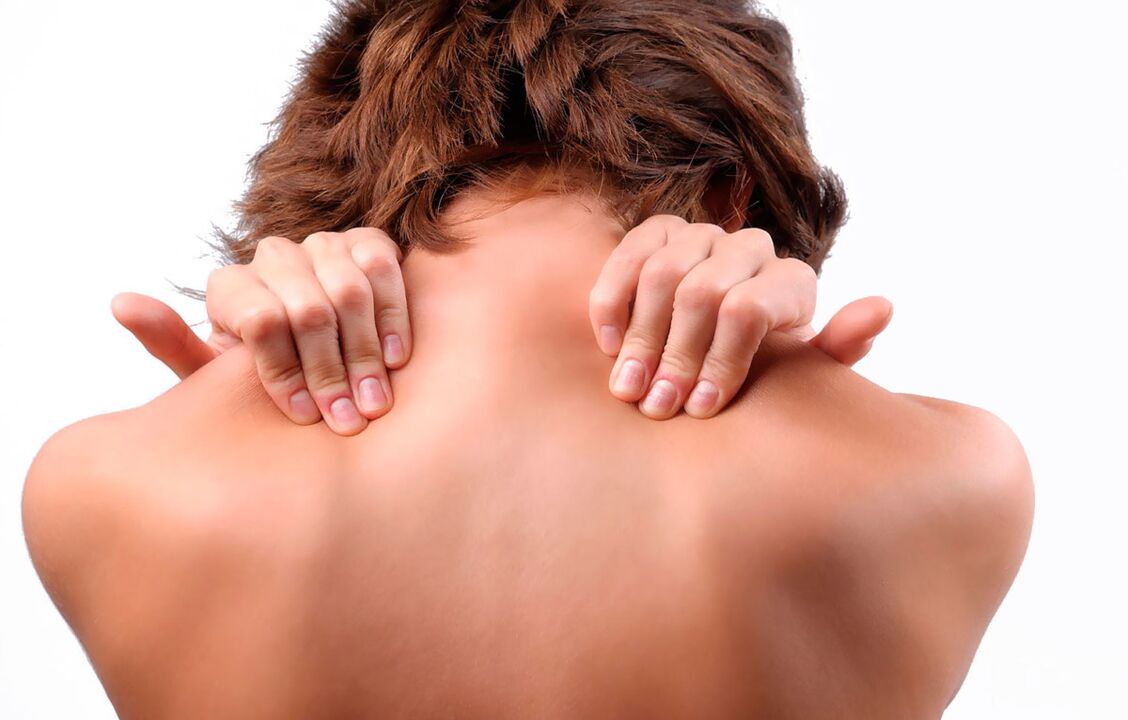
In this article, we will tell you in detail about the features of cervical osteochondrosis and describe the main methods of treatment. We hope that after reading it you will be able to choose the most effective way to tackle this disorder and be able to avoid radical surgery.
What is cervical osteochondrosis?

Cervical osteochondrosis is a disease in which the soft pulp is ossified, which acts as a cushioning function between the vertebrae. At the same time, blood vessels and nerve roots are involved in the disease development mechanism.
A characteristic feature of osteochondrosis of the cervix is the occurrence of pain in the shoulders, neck, neck and head. In addition, patients notice the appearance of dizziness, high blood pressure, oxygen dust, loss of sensitivity on one side of the tongue and other symptoms characteristic of cardiovascular pathologies. This becomes the reason for contacting doctors with other specialties and delays the process of diagnosing the disease significantly.
Most often, people in middle- and older age groups tend to ossify tissue in the upper part of the spine. This is due to the incorrect distribution of dynamic and static loads on the human skeleton.
However, if previous cervical osteochondrosis and itssymptomswas diagnosed in people over 45-50 years, but now the age of patients suffering from this disorder is significantly younger. Today, it affects young people aged 20-40 years, which is associated with a deterioration of diet and physical inactivity.
Currently, there is a dual approach to the problem of cervical spine: it is considered a combination of physiological and pathological factors. In the first case we are talking about the aging of the body under the influence of inevitable natural phenomena, in the second it is assumed that the destruction of intervertebral formations occurs on the background of inflammatory and dystrophic processes caused by a wrong lifestyle.
Symptoms of osteochondrosis of the cervix
Problems with the diagnosis of this disorder are due to the absence of pain in some situations and the implicit nature of the symptoms. In addition, a person may not feel signs of illness while regularly taking strong painkillers to minimize the general discomfort. All this can lead to serious disorders of the cervical joints.
Among the obvious symptoms of cervical osteochondrosis that cause the need fortreatment,includes: headache, high blood pressure, frequent dizziness. We will talk about them further.
Dizziness with cervical osteochondrosis

Dizziness does not always manifest itself on the background of problems with the cervix. In some cases, it indicates disorders of the brain, dysfunction of blood vessels and heart, inflammatory processes in the ear and nasopharynx, the presence of malignant tumors or any pathological conditions in the nervous system.
Dizziness with cervical osteochondrosis and the need for treatment may have a non-systemic or systemic etiology.
In the first case, a person may indicate a feeling of numbness, insecurity while standing and something semi-weak. At the same time, there is no sense of circular rotation.
With regard to systemic dizziness, it is most often signs of vestibular disorders, visual analyzer malfunctions and other changes that have occurred due to osteochondrosis. In this case, the patient may feel the circular rotation of the body or objects nearby.
If there is dizziness and the patient simultaneously develops symptoms such as acute pain in the head, numbness in the upper chest, fainting or decreased coordination of movements, he should be admitted immediately.
Headache with osteochondrosis of the cervix
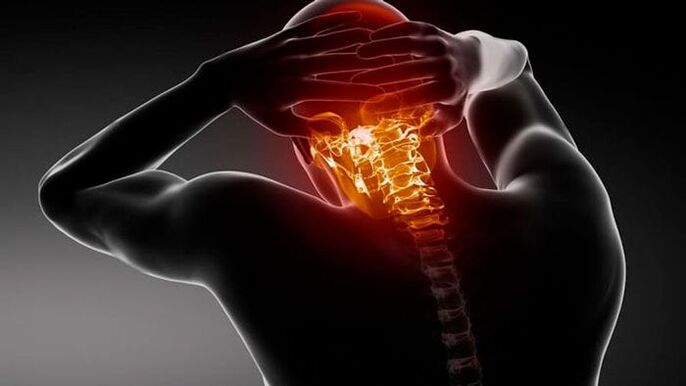
The appearance of headaches can signal the presence of a wide range of disorders. It most often occurs in women due to hormonal disorders, stressful situations, increased intracranial pressure, spasms in the brain, pinched nerve endings, inflammatory processes and other diseases.
can signal the presence of a wide range of disorders. It most often occurs in women due to hormonal disorders, stressful situations, increased intracranial pressure, spasms in the brain, pinched nerve endings, inflammatory processes and other diseases.
Pain andnoise in the headwith cervical osteochondrosis causing the need for treatment is often confused with symptoms of acute disruption of blood supply to the brain, arterial hypertension, or coronary heart disease. Often such signs occur in older people suffering from the above diseases.
To determine the exact cause of headaches, consult an experienced specialist. In this case, it is recommended to undergo an ECG and rule out the presence of cardiovascular disease.
Pain at another localization characteristic of cervical osteochondrosis
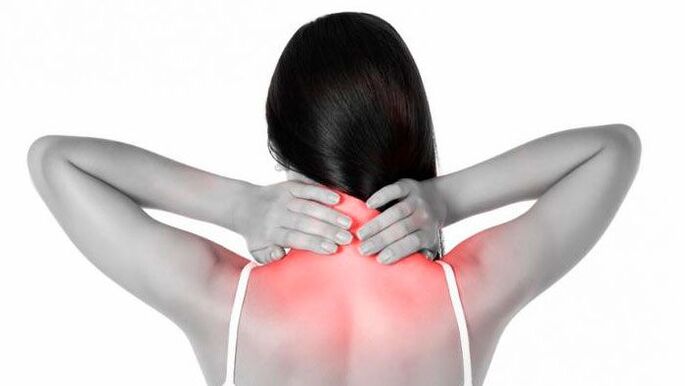
Pain in the back of the head and head is not always a sign of cervical osteochondrosis. In some cases, discomfort can spread from the neck to the arms and shoulders. Such symptoms are sudden and may occur on the background of sudden movements after a sharp sneeze or staying in a position during a night's sleep.
If the cause of the pain syndrome is chondrosis of the cervix, it usually disappears after a certain time or disappears after manual treatment of the cervix.
It should be noted that massage in this area is performed only after a thorough examination of the patient. With a non-professional approach, there is a high risk of worsening the patient's condition until and including his disability.
If we talk about osteochondrosis of the cervix and the need for its treatment, patients notice the following pain sensations:
- The appearance of a crunch during head rotation;
- The presence of pain syndrome inside the neck;
- Deterioration of sensitivity and appearance of muscle weakness in various areas of the body.
High blood pressure with problems with the cervix

Since the cervical vertebrae are directly connected to blood vessels and nerve endings, any disturbance in this area can trigger an increase in blood pressure. However, such jumps are of a temporary nature, manifested as short-term spasms and are not symptoms of hypertension.
If there is osteochondrosis of the cervical spine, the patient may, in addition to an increase in pressure, also experience other symptoms, and treatment in this case includes the use of special anesthetics. These include:
- The appearance of pain in the main area;
- Loss of sensitivity in the collar;
- Pain in the chest, arms and legs
- A sharp rise in blood pressure after stressful situations, prolonged stay in one position, excessive muscle tension and other similar situations.
A sharp deterioration in the patient's condition and a sharp rise in pressure indicate an urgent need to see a doctor.
Stages of development of cervical osteochondrosis
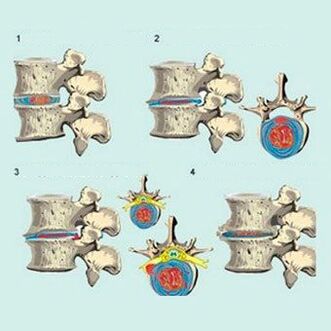
As it develops, the above disorder goes through several phases accompanied by specific symptoms. We talk about them in more detail below.
Initial stage osteochondrosis
As a rule, patients can only experience minor discomfort if the first degree of the disease occurs. They can only show pain with sudden movements that tilt and rotate the head. Many patients report increased fatigue in the lumbar spine and back and a constant feeling of tension. Treatment of osteochondrosis of the cervix in the initial stage does not involve takingsubstances. . . To recover, the patient only needs to performgymnasticswith cervical osteochondrosis and change the daily diet.
The second stage of the disease: features
The second stage of the pathology is characterized by more intense pain sensations that radiate to the upper extremities and increase with bending and rotation of the head. The causes of increased discomfort include: a reduction in the size of intervertebral discs and, as a result, pinching of nerve endings. In this case, the patient notices a deterioration of work capacity, the appearance of absence, increased fatigue and the occurrence of pain in the head.
Third degree osteochondrosis
It is accompanied by an increase in pain with irradiation to the area of the upper extremities as well as shoulders and neck. In this case, numbness in the muscles of the hands can be observed, which is associated with the appearance of an intervertebral hernia. In addition, patients may complain of severe weakness and dizziness.
The last stage of the disease
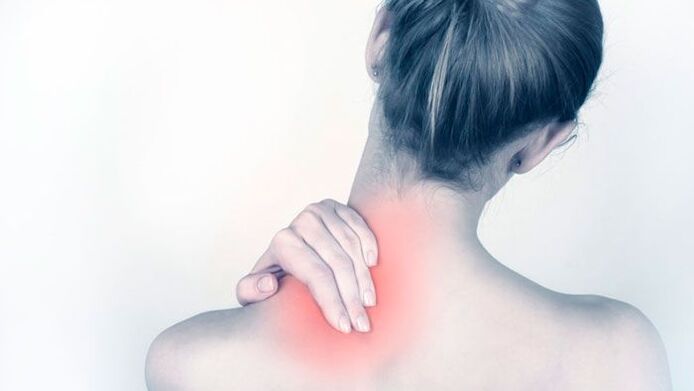
In the last stage, deep degenerative processes within intervertebral discs and their replacement with pathological tissue make themselves. The need for treatment of cervical osteochondrosisin the phase of aggravationmay be due to the defeat of several segments of the spine. In this case, patients indicate the presence of tinnitus, increased pain syndrome, the appearance of severe dizziness and decreased coordination of movements.
Causes of cervical osteochondrosis
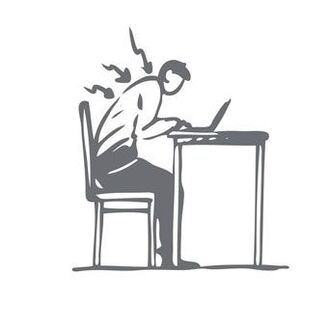
Often the development of this pathology is due to the sedentary work of everyday life, where a person does not control the correct position of the body in the chair and his head is constantly tilted forward. The same can be said about a prolonged stay in the head in a returned condition, which is typical of employees in construction specialties when performing repair activities.
As a rule, excessive stress on the cervix inevitably leads to degenerative disorders of vertebral discs. In addition, cervico-vertebral osteochondrosis, the symptoms of this disorder and the need for its treatment may be due to the following factors:
- Violation of calcium metabolism
- Causes of a genetic nature;
- Thermal irritants;
- When training extreme sports (treatment of sports injuries);
- Hypodynamics;
- Long stay with a person in a position due to professional affiliation;
- Obesity;
- Prolonged stressful situations
- Damage to neck and back of head
- Autoimmune processes that can provoke destruction of cartilage tissue.
The transition to a healthy diet and moderate physical activity can minimize the likelihood of developing osteochondrosis.
Syndromes of cervical osteochondrosis
Syndromes are represented by the simultaneous manifestation of several symptoms of the disease at once. As for osteochondrosis of the cervical spine, it is characterized by the following syndromes: vertebral, vertebral arteries, cardiac and radicular. It is about them that will be discussed below.
What is vertebral syndrome?
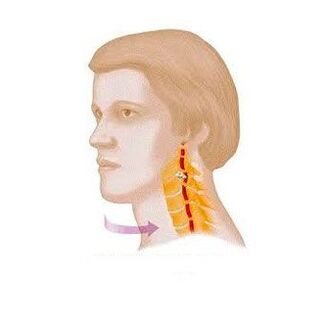
In the presence of the above syndrome, degenerative processes directly affect cartilage and bone tissue. In this case, the simultaneous manifestation of the following three signs is observed:
- Painful sensations when it is necessary to turn the neck;
- Inability to rotate the neck;
- The presence of a disorder in the intervertebral area or in the vertebrate, which is morphological (to determine this symptom, X-rays are taken).
If the patient is missing at least one of the above signs, it makes no sense to talk about vertebral syndrome.
Characteristics of vertebral artery syndrome
The essence of the above syndrome is damage to vertebral arteries that supply blood to the brain. It is characterized by concomitant manifestation of the following symptoms:
- On the basis of squeezing of the artery, the patient may feel dizzy, increase in blood pressure, the occurrence of tinnitus, nausea, etc. ;
- Due to irritation of the nerve roots, loss of sensitivity, the appearance of "flies" in the eyes, acute pain in the head and numbness can be observed;
- Lack of oxygen can cause severe pain in the main area, excessive sleepiness, decreased activity and decreased concentration.
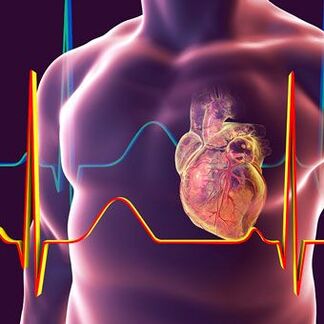
Signs of heart syndrome
In addition to the symptom of the vertebral artery in cervical osteochondrosis, the need for patient treatment also arises in the presence of heart syndrome. Many patients report a condition that is characteristic of coronary heart disease or similar to the symptoms of a heart attack. In this case, the following characters occur:
- A burning sensation and acute pain syndrome in the sternum;
- Tachycardia;
- The appearance of severe weakness, excessive fatigue and shortness of breath.
Radicular syndrome: features

It is characterized by a deterioration of neuromuscular conduction. In the presence of radicular syndrome, the patient may feel loss of sensitivity or, conversely, severe pain syndrome. Also its features include:
- Pain in the back of the head or, conversely, numbness in this area
- Difficulty chewing food, numbness in the area behind the ear, a feeling of fullness in the tongue;
- The appearance of symptoms of sore throat, hiccups, pain in the collarbone;
- Difficulty moving the upper limbs, discomfort in the shoulder area;
- Violations of the forearm and shoulder blades;
- Loss of sensitivity in the fingers.
Diagnostics
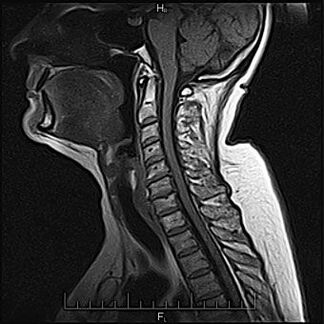
The most important and informative methods for diagnosing osteochondrosis include magnetic resonance imaging (MRI). MRI scans with a high degree of detail reflect the condition of not only the bone tissue of the spine, but also soft tissue - muscles, cartilage, blood vessels, nerves and intervertebral discs. If there are contraindications to MRI (the presence of metal prostheses, pacemakers), computed tomography is prescribed, but the information content of the method is much lower in terms of diagnosing osteochondrosis.
Is it possible to treat osteochondrosis of the cervix?
When it comes to cervical osteochondrosis, effective treatment of this disorder is only possible with a comprehensive review of the lifestyle, constant prevention and sanatorium restoration. In practice, only a few achieve this, especially in our country's climate, when it is almost impossible to completely avoid hypothermia and new inflammatory processes. Nevertheless, you can significantly alleviate your condition, including in the most advanced cases, and prolong periods of remission.
Treatment of cervical osteochondrosis

In the first stage of osteochondrosis, the patient will be helped by conservative drug-free treatment. You should correct your posture, pay attention to workplace equipment, interrupt work for a few minutes every day to perform an uncomplicatedremedial gymnasticswith cervical osteochondrosis, which can be done right at the desk in the office. Swimming, increased physical activity and intake of vitamin and mineral complexes will have a positive effect on the entire musculoskeletal system.
Benefits of Shockwave Therapy
If the patient has osteochondrosis of the cervix and its symptoms, a new method of treatment is considered the most effective - using shock waves. This procedure is notable for its affordable cost. In addition, if a medical institution has special equipment, you can take the UHT course for free.
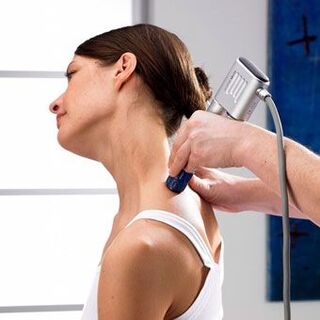
The benefits of UHT include:
- Maximum efficiency
- Lack of discomfort during the procedure
- The least likelihood of side effects
- Reduce the need for invasive treatments
- Reduce the need to take medication.
Medicine for cervical osteochondrosis
If you have cervical osteochondrosis and are interested in treatmentmedicalandEffective,you can find information on suitable substances on the Internet. However, despite the many different drugs and the lack of need for prescriptions, self-medication is not recommended. Most drugs have side effects and contraindications, it is also important not to overdose.
Non-steroidal anti-inflammatory drugs (NSAIDs).They are used to relieve swelling and pain.
Muscle relaxants, sedatives
They are also prescribed to relieve the patient's general condition and reduce the dose of NSAIDs. By simultaneously relieving muscle spasms and nervous tension, you can achieve the best therapeutic effect.
At the end of the course of treatment, doctors usually recommend buying non-steroidal anti-inflammatory drugs for the home first aid kit, as neck pain can return when the weather changes, overexertion and stress.
Physiotherapy is approaching
In cases where drug therapy is contraindicated or does not have the desired effect, and sometimes for a complex effect, physiotherapy methods are used, which are available in both classical and alternative medicine. All are aimed at relieving muscle spasms, inflammation and pain.
Acupuncture. The essence of the method is to "awaken" biologically active points by inserting special thin needles into them to a depth of several centimeters. The procedure is painful in itself, but it helps relieve pain in the spine. Multiple sessions are required.

Manual therapy. This method is effective if the patient has itclampnerves in the cervical spine, the corresponding symptoms were diagnosed and the need for treatment was identified. Nerves and blood vessels trapped by deformed vertebrae can be released by manual stretching of the spine.
Hirudotherapy (leeches). Relieves inflammation and swelling due to biologically active substances secreted by leeches. Strengthens blood circulation.
Shock wave treatment. Restores blood circulation and destroys osteophytes, helping cartilage tissue to return to its normal structure. The patient already feels a decrease in pain and swelling after 1-2 sessions. The course of shock wave treatment includes up to ten procedures, it can be prescribed as part of complex non-invasive therapy and in the rehabilitation period after surgery. It has a number of contraindications and is used only after a comprehensive examination by several specialists, including a neurologist, cardiologist and vertebrologist.
Exercises for cervical osteochondrosis
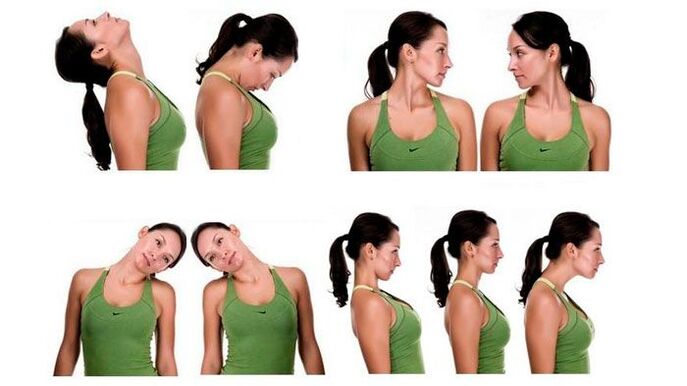
If a person has cervical osteochondrosis, dailyexercises,developed to treat this disorder, will help strengthen the muscle corset, which means - reducing the strain on the cervix. Exercise therapy is indicated in all phases of the disease as well as a preventative measure. During exacerbations, a set of exercises should be performed with caution.
Typical exercises for the treatment of osteochondrosis of the cervix:
- the head turns to the sides;
- the head is tilted back and forth;
- lift the shoulders with relaxed or firm hands and hold them in this position for 15-20 seconds;
- alternating tension of the braces and extensions of the neck with a stationary head position.
The exercises should be repeated 5-7 times. The duration of the lesson is 15-20 minutes.
Surgical procedure
In the absence of a positive effect after 6 months of conservative treatment, spinal fusion may be indicated. The procedure aims to immobilize the affected vertebral segment. It includes removal of the intervertebral disc, decompression of the nerve root and the placement of an implant or the creation of a physiological height on the disc space. The operation has many contraindications and side effects. For example, spinal cord fusion can lead to vertebral disability. Therefore, surgery is indicated only in extreme cases.
Nutrition and lifestyle
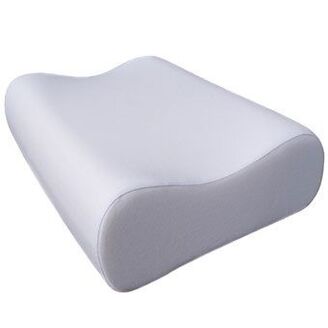
After surgical treatment of cervical osteochondrosis, in the early rehabilitation period, it is necessary to wear a fastening collar. During conservative treatment and in the late rehabilitation period, a diet rich in calcium and vitamins, correction of usual working postures and posture in general, a daily set of therapeutic exercises for the neck, orthopedic pillows is recommended.
Treatment of cervical osteochondrosis at home
If you have been diagnosed with cervical osteochondrosis and its symptoms and you want to undergohome treatment,it must be remembered that such an independent intervention can only be practiced in combination with the procedures prescribed by a specialist.
Some experts recommend usingorthopedic pillowwith cervical osteochondrosis, and use such heating agents as pepper plaster, mustard plaster and alcohol compresses. According to others, it is only specialexercisesfor treatment andprevention. . .
You can also resort to the help of traditional medicine recipes, which are based on the use of honey-potato compresses and dressings with natural ingredients. More information about such tools can be found on the Internet. However, only an experienced and highly qualified physician can diagnose cervicothoracic osteochondrosis, identify its symptoms, and prescribe the most effective treatment.
Preventive measures for cervical osteochondrosis

An examination by the attending physician is required once a year. A course with shock wave therapy can be prescribed. Hypothermia and infectious diseases, prolonged work at the computer in one position should be avoided. If you are traveling by long-haul plane or bus, use a headrest cushion to relieve muscle tension and prevent congestion. For daily sleep, use special orthopedic pillows that ensure the correct position of the head.

















































